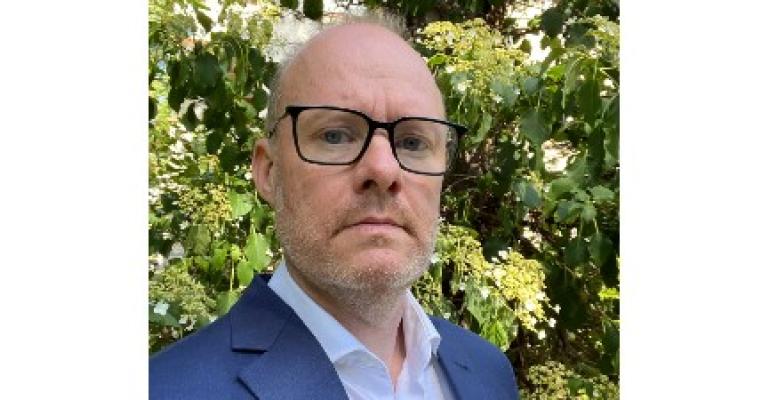This was among the company's key messages at last week's SMM Trade Fair in Hamburg.
As new green technologies emerge, 'first you have to make sure you're not sacrificing safety,' stressed NAPA's Esa Henttinen, EVP safety solutions, who noted the weight and space needed for new technologies and alternative fuels impact stability. Close collaboration is 'key, and we always work in a partnership mode with our customers,' he added.
Holistic process
'A cruise ship is a very complex thing and everything is related. If you change one parameter, that affects another. You have to make sure stability is always OK, longitudinal strength is met, that you are not stressing the ship too much,' Henttinen explained.
'It has to be a holistic process. If you sub-optimize the efficiency or the safety, it doesn't bring the best overall solution. We think both of optimizing the efficiency but considering the stability-related safety.'
3D ship design solutions
NAPA offers 3D-based ship design solutions that facilitate collaboration and information sharing among naval engineers, tech developers, class societies and other stakeholders, helping them create more efficient designs.
Reducing CO2 emissions is equally important for existing ships and when owners consider retrofitting newer, more efficient engines, using alternative fuels or incorporating batteries, all these have impacts.
'You may need to consider changing the location of one bulkhead, for instance, so the equipment fits into the space. If that's the case, that affects the overall stability of the ship. That's where we come to the picture,' Henttinen said. 'We have experience and knowledge. We can help. We can also provide statistics from existing ships they have been operating over the years.'
Also, these technologies change the weight distribution. Since cruise ships are big, people may think the impact is not that significant.
On the contrary: 'Ships are already optimized so there are not that many great reserves when it comes to longitudinal strength. So everything has to be planned in a very careful way, Henttinen said.
He pointed out NAPA is probably the only party that's storing stability-related parameters over the lifetime of a ship, so it has a full history.
Over 30 years in business, the Helsinki-based international company has amassed a huge body of knowledge about ships' operational profiles — how much bunker should be carried, the bunker sequences, how often water should be bunkered and so forth — all these factors affect operatonal efficiency like trim and fuel consumption.
Electronic logbook
On top of this are tools like NAPA's electronic logbook, which facilitates mandatory CO2 emissions reporting, whether it's EU MRV (monitoring, reporting and verification) or IMO DCS (data collection system).
The cruise sector has been the frontrunner using the electronic logbook, starting more than a decade ago with Carnival Cruise Line and now adopted by 60% to 70% of the industry, Henttinen estimated.
Besides its efficacy for regulatory reporting and calculating the carbon intensity index, the electronic logbook also creates a big data set that's relevant for decarbonization efforts.
'You can utilize this big data with your operational people ashore as well as the seafarers,' Henttinen said. The data is valuable because if an owner is considering alternative fuels, 'you have to know what are the typical sailing routes, typical weather conditions. If you have done that hundreds or thousands of times, you start to have a very good holistic understanding of how the ship is behaving in different conditions and what are the fuel consumption parameters. Then you can test new methods and possibly implement alternative fuels and so forth.'
Fleet intelligence platform
Thanks to NAPA's cloud-based fleet intelligence platform, critical information can be shared in real time with fleet operations centers and, if needed, classification societies and emergency response services ashore.
Through a web browser view, shoreside teams have the same situational awareness of the ship as the seafarers onboard. Information that's traditionally been in silos is now available to the deck, engine and shoreside people so they can plan voyages together and check fuel consumption in real time.
And, if there's an issue, information can be quickly shared with shoreside experts and authorities.
It can be 'really critical' that they have a full understanding of the ship's situation so they support the seafarers,' Henttinen said. 'Our fleet intelligence platform is the collaboration platform between shoreside, seafarers and even the authorities, so that is a great improvement to the safety level for the whole cruise industry.'
Collaboration, not 'big brother'
All the big cruise lines have NAPA's fleet intelligence platform in their fleet operating centers on a display screen where staff can follow the ship's stability parameters, longitudinal strength and everything in the logbook.
'It's not that big brother is checking what seafarers are doing. It's a collaboration,' Henttinen said. 'There are more eyes detecting if there any things that should be addressed by the officers on board. Also, you can track the long-term things, fuel-related and emissions-related. It helps you plan for the future, including decarbonization. You have the knowledge. You know how the ship is behaving in different plans and conditions.'
Seafarer training
With so many new technologies coming, training for seafarers is essential. Henttinen noted NAPA has developed comprehensive e-learning tools so seafarers can train anywhere, at their convenience. During the pandemic shutdown, NAPA was continuously providing training for officers to stay sharp and on top of its systems and solutions.
'Times were difficult for our customers but we were in the situation together so we were helping as much as we could to maintain and upkeep the knowledge,' Henttinen said.
'The technologies are just the tool but the key is the people and the seafarers, and training and the collaboration. By focusing on the people, then you really achieve the goal. Our goal is improving the safety of the cruise industry.'
Copyright © 2024. All rights reserved. Seatrade, a trading name of Informa Markets (UK) Limited.
Add Seatrade Cruise News to your Google News feed.  |

